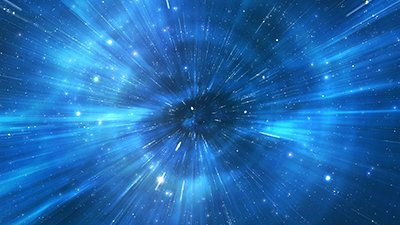Mystery of the Missing Mass
Some of our mass is missing. Or not.
News Source
- Yahoo News: “Aussie Student Finds Universe’s ‘Missing Mass’”
Dr. Kevin Pimbblet has unveiled the hiding place of vast quantities of mass supposedly missing from the universe. The missing mass is not the dark matter needed to stabilize spiral galaxies. Neither is it antimatter presumed to exist as a consequence of the big bang. But big bang cosmologists consider its discovery “crucial to validate or invalidate [their] standard cosmological model [the big bang].”1
The matter is presumed to have been present 10 billion years ago because distant quasars are interpreted by evolutionary cosmologists to be windows into the past. Quasars are associated with more mass than is found in nearby (and presumably more recently formed) parts of the universe. The mass is believed missing because the big bang idea demands that the nearby universe should represent a more aged version of the distant universe—with the same amount of mass. A related paper about this temporal-matter-mismatch says, “An inventory of the nearby Universe has turned up only about half as much normal matter, an embarrassingly large shortfall.”2
About a year ago, hot gases were indirectly detected between galaxies. Hopes ran high that these gases would contain the misplaced matter.2 However, until now, no electromagnetic emissions were detectable in the gases. The current research detected X-ray emissions from some of these gaseous filaments. The emissions suggest the filaments contain matter. The researchers hope this method for detecting filaments will facilitate their more complete examination.
The yahoo.com article announcing this discovery is illustrated with a photo captioned “stars that are forming in a dwarf starburst galaxy.” Interesting choice of illustration, since star formation has nothing to do with this discovery.3 Furthermore, star formation has never been observed. Secular astronomers, observing many hot, blue stars in regions like this starburst, believe they are seeing stars form because they know hot, blue stars cannot last billions of years. Thus the starburst galaxy is evidence for a young universe.
The idea that more mass was present 10 billion years ago is based on a belief that light takes billions of years to travel from the most distant parts of the universe.
What has been discovered is a way to directly detect intergalactic gases, confirming they contain mass. The fact that big bang cosmologists believe the discovery of the missing mass vital to their big bang model should not imply that finding some gaseous mass in the universe—even a lot of it—proves the big bang happened. Such thinking is an example of the logical fallacy known as “affirming the consequent.” In other words, if a theory predicts something, and that something is then found, the illogical mind takes that finding as proof that the theory is true. (Ptolemy believed planets orbited earth; his model predicted many observable phenomena, but it was wrong.)
Furthermore, we would say that no mass has been lost. The idea that more mass was present 10 billion years ago is based on a belief that light takes billions of years to travel from the most distant parts of the universe. The transit time required for distant starlight to reach the earth presents challenges to both creationist and big bang cosmology. A recently advanced solution to this problem is called the “The Anisotropic Synchrony Convention.”
We contend that the matter was never lost because a look at a distant quasar is not a look backward in time. And intergalactic gas containing low-density X-ray-emitting particles in no way damages the Creation model of cosmology.
Further Reading
- Get Answers: Astronomy
For More Information: Get Answers
Remember, if you see a news story that might merit some attention, let us know about it! (Note: if the story originates from the Associated Press, FOX News, MSNBC, the New York Times, or another major national media outlet, we will most likely have already heard about it.) And thanks to all of our readers who have submitted great news tips to us. If you didn’t catch all the latest News to Know, why not take a look to see what you’ve missed?
(Please note that links will take you directly to the source. Answers in Genesis is not responsible for content on the websites to which we refer. For more information, please see our Privacy Policy.)
Footnotes
- Fabrizio Nicastro, Smita Mathur, and Martin Elvis, “Missing Baryons and the Warm-Hot Intergalactic Medium,” Science 319, no. 5859 (January 4, 2008):55–57, doi:10.1126/science.1151400.
- “Warm-hot Intergalactic Medium in the Sculptor Wall,” European Space Agency, May 11, 2010, http://sci.esa.int/xmm-newton/47026-whim-in-the-sculptor-wall/.
- See “Star Formation and Creation.” When astronomers observe phenomena happening near stars, they cannot know that the phenomena they are seeing has anything to do with star formation. “[Star formation] has never been observed, nor could it truly be observed since the process is supposed to take hundreds of thousands of years. Gas in space is very resistant to being compressed into a star. Compression of gas causes an increase in magnetic field strength, gas pressure, and angular momentum, which would all tend to prevent any further compression into a star. Although these problems may not be insurmountable, we should be very skeptical of star formation—especially given the lack of observable support” (Ham et al., New Answers Book 3 [Green Forest, Arkansas: Master Books, 2010], 193.)
Recommended Resources

Answers in Genesis is an apologetics ministry, dedicated to helping Christians defend their faith and proclaim the good news of Jesus Christ.
- Customer Service 800.778.3390
- © 2024 Answers in Genesis






